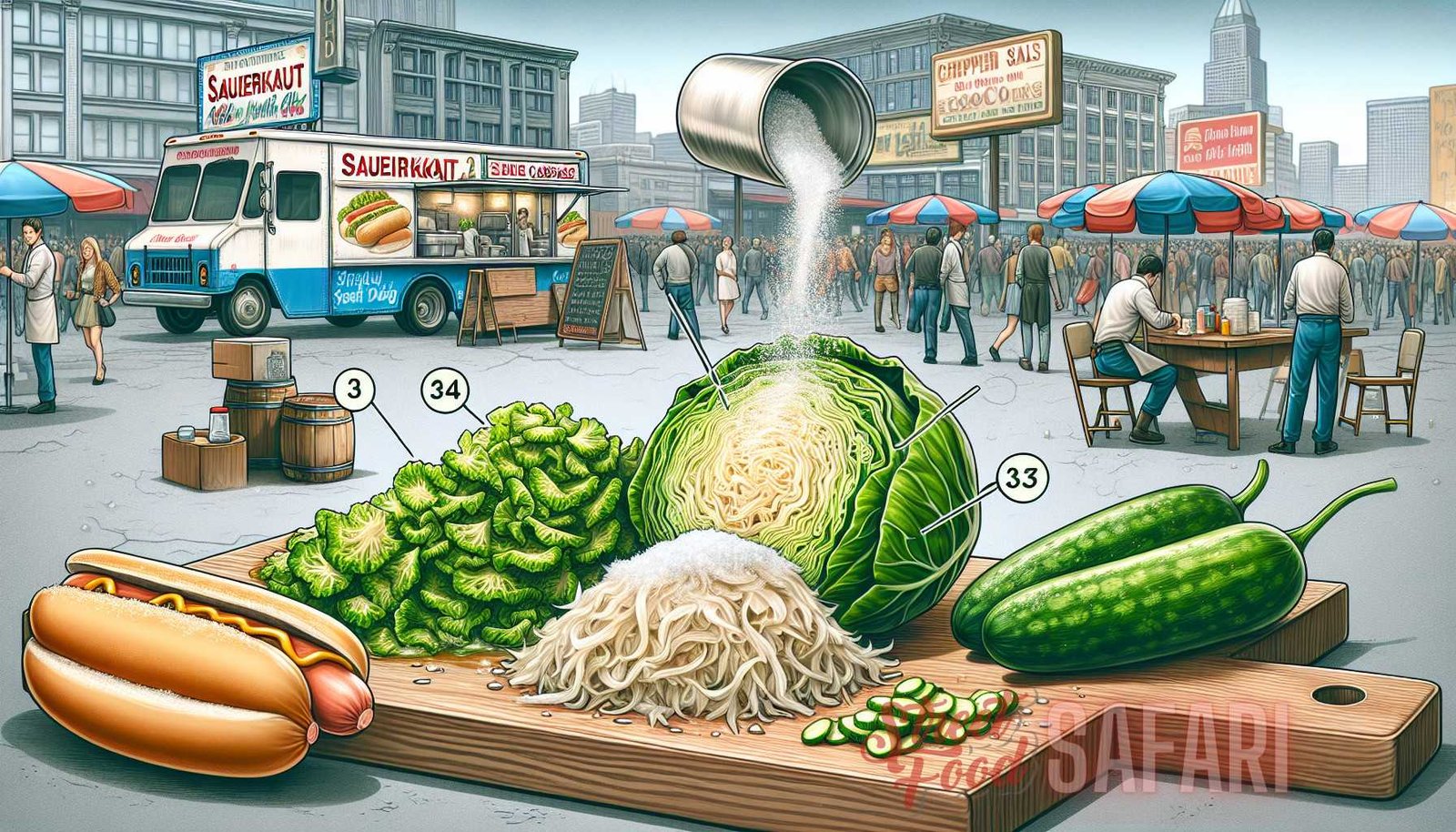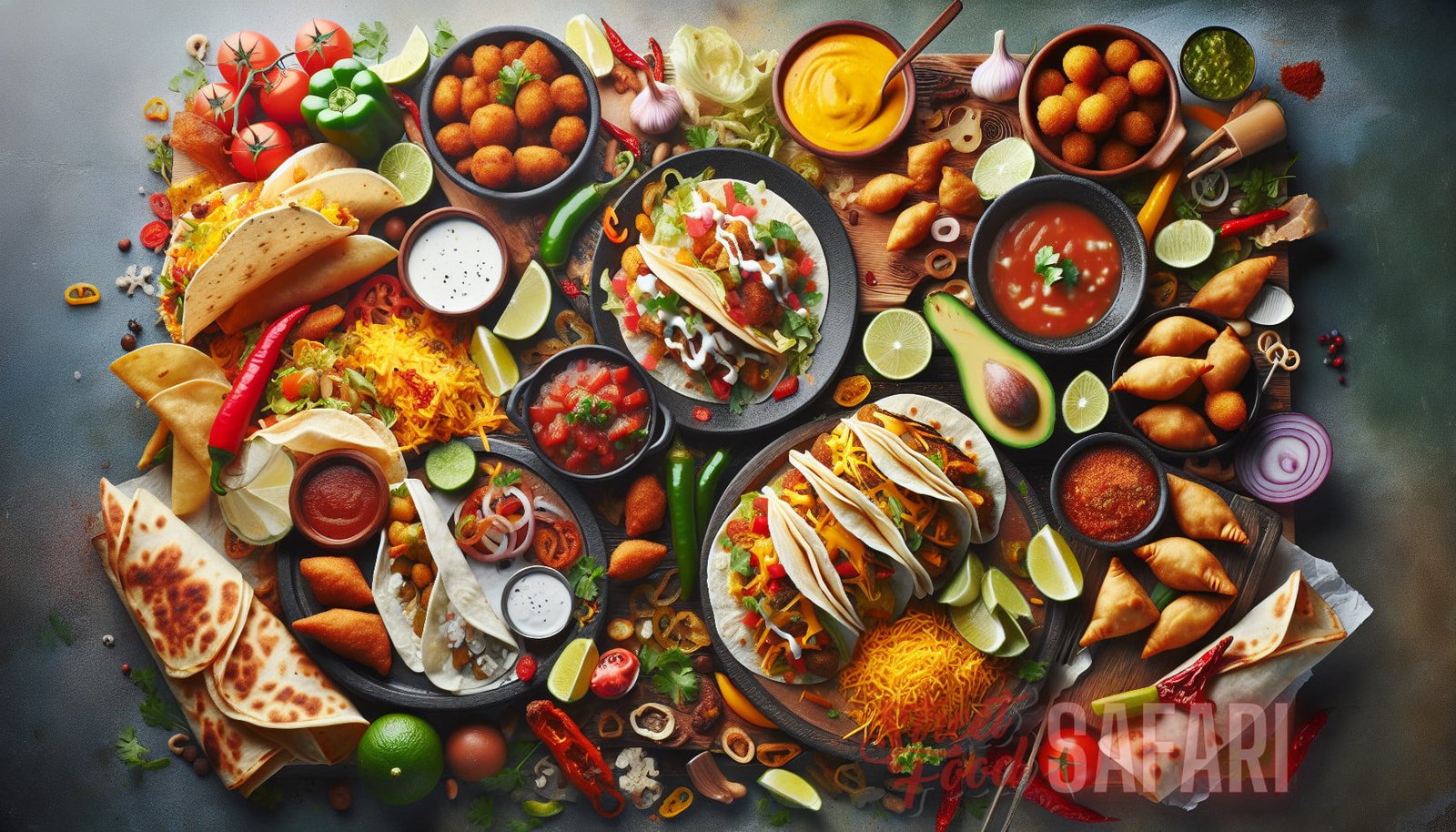Introduction
Street food has become more than just a quick bite to eat on the go – it has become a culinary sensation. From mouthwatering tacos in Mexico City to savory samosas in Mumbai, street food delights have captured the hearts and taste buds of food lovers around the world. But have you ever wondered what makes these street food dishes so irresistibly delicious? It’s all about the culinary chemistry – the science behind these mouthwatering creations.
In this article, we will delve into the fascinating world of street food and explore the science behind its tantalizing flavors. From the Maillard reaction to the magic of spices, we will uncover the secrets that make street food so addictive. So buckle up and get ready to embark on a culinary journey filled with science, flavor, and the enchanting aromas of street food.
The Maillard Reaction: The Secret Behind Crispy, Caramelized Goodness
One of the key components of mouthwatering street food is the Maillard reaction. This chemical process occurs when amino acids and reducing sugars react at high temperatures, resulting in the browning and flavor development of food. It is responsible for creating those irresistibly crispy and caramelized layers in street food delights.
Let’s take a closer look at how the Maillard reaction works:
- First, the amino acids present in proteins, such as meat or dough, react with reducing sugars, such as glucose or fructose.
- The heat from cooking causes the amino acids and sugars to undergo a series of complex chemical reactions.
- These reactions result in the formation of hundreds of different flavor compounds, including pyrazines, furans, and aldehydes.
- The Maillard reaction not only changes the color of the food but also enhances its aroma and flavor.
Street food dishes like crispy pork belly or grilled kebabs owe their mouthwatering flavors to the Maillard reaction. The golden-brown crust and savory aroma that surrounds these dishes are a result of the complex chemistry happening in the cooking process.
For a more detailed understanding of the Maillard reaction and its role in creating the crispy, caramelized goodness of street food, check out this Wikipedia page.
The Magic of Spices: Adding Flavor and Health Benefits
Spices are the soul of street food. They not only add incredible flavors but also provide numerous health benefits. Let’s explore some of the spices commonly found in street food and their remarkable properties:
Cumin
Cumin is a staple spice in many street food dishes around the world. It adds a warm and earthy flavor to dishes like tacos, kebabs, and curry. Besides its incredible taste, cumin also offers several health benefits:
- Rich in antioxidants that help fight inflammation and protect against chronic diseases.
- Contains iron, which is essential for healthy blood circulation.
- Aids in digestion and may help relieve symptoms of indigestion and bloating.
Try incorporating cumin into your next homemade street food creation to add depth of flavor and enjoy its health benefits.
Coriander
Coriander, also known as cilantro, is a versatile herb that is widely used in street food cuisines. Its distinctive citrusy and slightly spicy flavor adds a refreshing touch to various dishes. Here are some health benefits of coriander:
- Rich in antioxidants that may help lower the risk of heart disease and certain types of cancer.
- Contains antimicrobial properties that may help combat foodborne pathogens.
- May aid in digestion and promote gut health.
Whether sprinkled over a plate of tacos or added to a flavorful chutney, coriander brings a vibrant and aromatic element to street food delights.
Turmeric
Turmeric, known for its vibrant yellow color, is a powerhouse spice in street food. It is commonly used in curries, rice dishes, and drinks. Beyond its captivating hue, turmeric offers remarkable health benefits:

- Contains curcumin, a compound with powerful anti-inflammatory properties.
- May help reduce the risk of chronic diseases, including heart disease, cancer, and Alzheimer’s.
- Has antioxidant properties that protect the body from free radicals.
The next time you savor a bowl of golden turmeric rice or enjoy a cup of warming turmeric tea from a street food vendor, remember the numerous health benefits this spice brings to the table.
For more information on spices and their health benefits, refer to this Healthline article.
The Art of Marination: Enhancing Flavor and Tenderness
Marination is a crucial technique in street food preparation. It involves soaking meat, vegetables, or tofu in a flavorful mixture to enhance their taste, tenderness, and juiciness. The science behind marination lies in the process of osmosis and enzymatic reactions.
Here’s how marination works:
- The liquid marinade consists of various ingredients like acids (vinegar, lemon juice), oils, spices, and herbs.
- When the food is submerged in the marinade, osmosis occurs.
- Osmosis is the movement of solvents, such as water, from an area of lower solute concentration (the food) to an area of higher solute concentration (the marinade).
- The flavorful ingredients in the marinade, including spices and acids, penetrate the food through osmosis.
- The acids in the marinade also help break down proteins in the food, leading to increased tenderness.
- Enzymes naturally present in the food can also contribute to the tenderizing process by breaking down tough connective tissues.
Marination not only infuses the food with delicious flavors but also tenderizes tougher cuts of meat, making them more enjoyable to eat. So the next time you savor that juicy marinated chicken skewer or a succulent pork belly taco, remember the science behind its exceptional taste and texture.
The Power of Texture: The Crucial Role of Street Food’s Mouthfeel
Texture plays a crucial role in our enjoyment of food. When it comes to street food, the combination of flavors and the experience of different textures elevate the overall culinary delight. Here are some textures commonly found in street food and the science behind them:
Crispiness
Crunchy and crispy texture is a sought-after quality in many street food dishes. Whether it’s the crispy coating of a chicken schnitzel or the golden-brown crust of a samosa, the science behind crispiness lies in moisture, fat, and starch content:
- The presence of moisture in food can prevent crispiness. For example, fried foods that contain excess moisture may become soggy instead of crispy.
- Starches, such as flour or breadcrumbs, create a crisp coating when deep-fried. The high heat causes the starches to expand, creating a light and crispy texture.
- The fat content in the food contributes to its crispy texture. Foods with higher fat content tend to fry more evenly and develop an extra crunch.
Next time you indulge in a crispy street food delight, pay attention to its texture and appreciate the science that goes into achieving that perfect crunch.
Tenderness
Tenderness is another important texture in street food, especially when it comes to meat. Achieving a tender texture involves breaking down collagen, which is a tough connective tissue found in muscle fibers. The two main methods of achieving tenderness are:
- Cooking low and slow: This method involves cooking meat at a low temperature for an extended period, allowing the collagen to break down slowly. The result is tender, melt-in-your-mouth meat.
- Marination: As discussed earlier, marination helps break down tough connective tissues in meat, leading to increased tenderness. The acidic ingredients in the marinade, such as vinegar or citrus juice, contribute to this process.
By understanding the science behind achieving tenderness, street food vendors can create unforgettable dishes that keep customers coming back for more.
The Role of Fermentation: Unveiling the Tangy and Complex Flavors
Fermentation is a traditional technique used in street food preparation and is responsible for generating complex and tangy flavors. Fermentation occurs when microorganisms, such as bacteria or yeast, convert sugars into acids or alcohol. Let’s explore how fermentation enhances the taste of street food:
Sauerkraut

Sauerkraut, a popular topping in street food like hot dogs and tacos, is made through a process called lacto-fermentation:
- Chopped cabbage is mixed with salt and left to ferment at room temperature.
- The salt draws out the moisture from the cabbage, creating a brine.
- The natural bacteria present on the cabbage, specifically Lactobacillus, starts to ferment the sugars in the cabbage, producing lactic acid.
- Lactic acid not only gives sauerkraut its tangy flavor but also acts as a natural preservative.
The tanginess and complex flavors of sauerkraut result from the fermentation process, making it a beloved addition to street food dishes worldwide.
Kimchi
Kimchi, a staple in Korean street food, undergoes a similar fermentation process as sauerkraut but with the addition of spices:
- Cabbage is fermented with a mixture of salt, chili flakes, garlic, ginger, and other seasonings.
- The lactobacillus bacteria present on the cabbage convert the sugars into lactic acid.
- The addition of spices gives kimchi its signature spicy and aromatic flavor.
Kimchi not only adds a delightful explosion of flavor to Korean street food dishes but also offers numerous health benefits, thanks to the fermentation process.
To learn more about the science of fermentation and its role in creating complex flavors, refer to this Food Network article.
Incorporating Science into Your Own Street Food Adventures
Now that you have a deeper understanding of the science behind mouthwatering street food delights, why not bring that knowledge into your own kitchen? Here are a few tips to incorporate street science into your homemade street food adventures:
Experiment with Marinades
Marination is a great way to infuse flavors and tenderize meat. Try experimenting with different marinades by combining acids (such as lemon juice or vinegar), oils, spices, and herbs. Allow the meat to marinate for a few hours or overnight to achieve maximum flavor and tenderness.
Play with Spice Blends
Spices are the building blocks of flavor in street food. Create your own spice blends by combining different spices and herbs to add depth and complexity to your dishes. The possibilities are endless, so don’t be afraid to get creative.
Try Fermenting Your Own Condiments
Fermented condiments like pickles, sauerkraut, or hot sauce can take your homemade street food to the next level. Experiment with lacto-fermentation techniques and create unique flavor combinations by adding spices and herbs.
By incorporating street science into your own culinary adventures, you can recreate the mouthwatering flavors of street food in the comfort of your own home.
Conclusion
Street food is more than just a quick bite – it’s a culinary experience. The science behind street food delights is what makes them so irresistibly delicious. From the Maillard reaction that creates crispy, caramelized layers to the power of spices that add flavor and health benefits, every element of street food is driven by culinary chemistry.
So the next time you savor a mouthwatering street food delight, take a moment to appreciate the science that goes into creating its exceptional taste, texture, and aroma. And don’t forget to unleash your inner street scientist in your own kitchen, as you experiment with flavors, marinades, and fermentation to create your own street food masterpieces.
For more articles on street food and its delights, check out:



